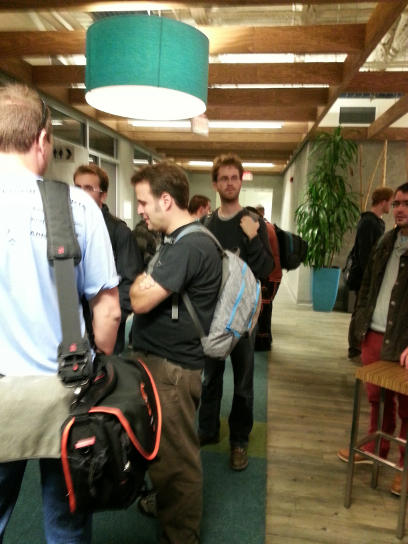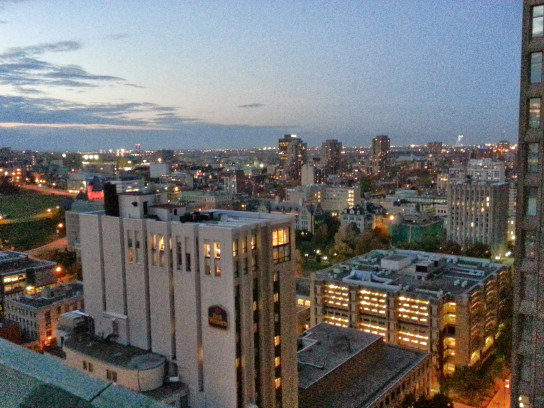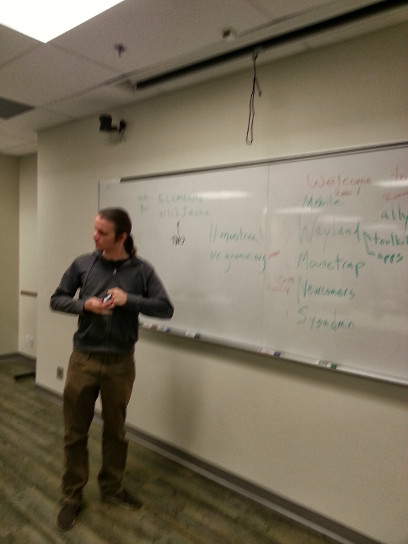Here is a belated update from the GNOME summit that is happening this weekend in Montreal.
Jasper and I drove up from Boston Saturday morning, so we arrived a little late. Most people were already there, and there was a well-filled whiteboard with plans:
The weekend has been pretty productive so far.
We’ve talked about adding support for notifications to GApplication. This will allow us to get rid of the libnotify dependency and make our application API a bit more complete. This has been discussed for a while, on the gtk-devel list and at the last GTK+ hackfest and again at Guadec. Today, we agreed to merge the GIO patch (see bug 688492). It uses a GIO extension point to allow different implementations; currently we have implementations based on the freedesktop.org spec and on a new, nicer D-Bus API). It should be possible to write implementations for the native Windows and OS X notification APIs too. Help with this would be much appreciated !
Another session I have participated in is a design review and planning session for GNOME Boxes. We’ve done a pass over the UI and took notes about many smaller and larger issues, but we’ve also talked about new features such as multi-monitor support, import/export, snapshots and cloning, and how the user experience for these could look.
 The small piece of code I got to write this weekend is to bring back meaningful accessible names for icon-only buttons; these used to come from the GtkStock system, and we didn’t have them for buttons that are constructed from icon names or GIcons. This is an unfortunate regression in the otherwise good out-of-the-box accessibility support of GTK+, so it is nice to have it back. The fix will appear in GTK+ 3.10.2.
The small piece of code I got to write this weekend is to bring back meaningful accessible names for icon-only buttons; these used to come from the GtkStock system, and we didn’t have them for buttons that are constructed from icon names or GIcons. This is an unfortunate regression in the otherwise good out-of-the-box accessibility support of GTK+, so it is nice to have it back. The fix will appear in GTK+ 3.10.2.
Another related session I participated in is a review of the Wayland port from an accessibility perspective with the GNOME accessibility team; we’ve identified a number of issues that we will have to address to keep our a11y support at the same level (such as giving the screen reader a way to identify the surface under the pointer).

